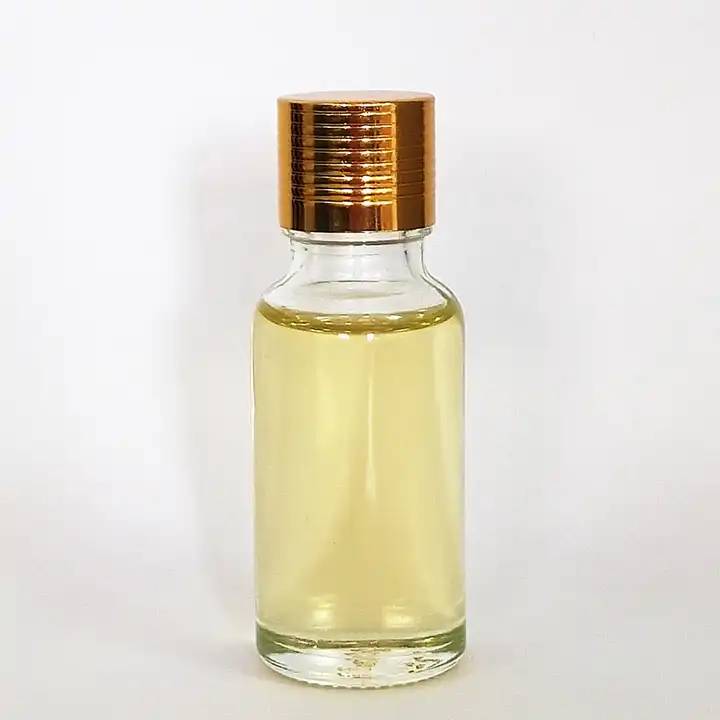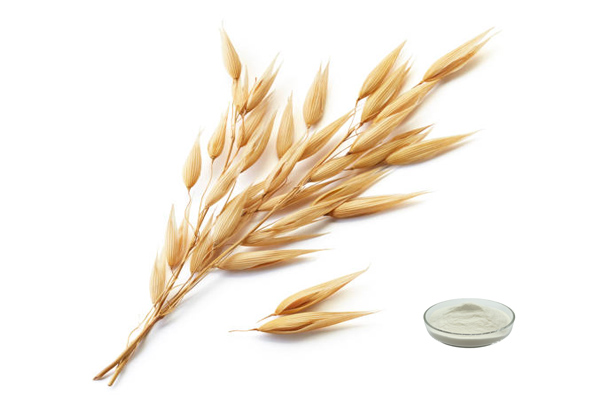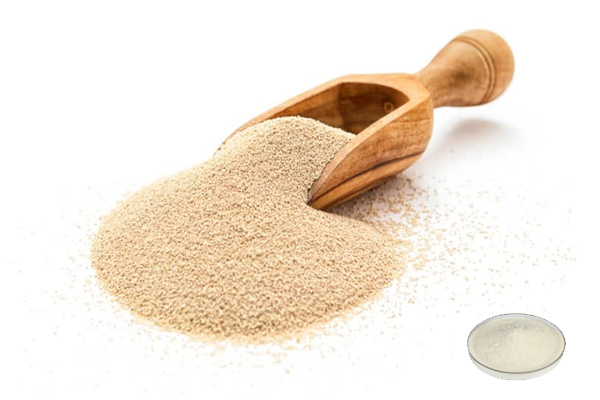Conjugated Linoleic Acid-Triglyceride 78%
Nombre del producto :Conjugated Linoleic acid-triglicérid
Fuente: semilla de cártamo
Ensayo :78%
Aspecto: líquido oleoso de color amarillo páliclaro
Método de ensayo :HPLC
Residuos de plaguicidas: cumplir con la norma (CE) n º 396/2005
- descripción
- Hoja de datos
- Certificado de certificado
-
¿Qué es el ácido linoleico conjudotriglicérido?
Conjugated linoleic acid glyceride (CLAG) is the glyceride type ofConjugated Linoleic Acid (CLA). The naturally occurring CLAG is commonly found in ruminant animals, such as milk and beef. Although Conjugated linoleic acid glyceride (CLAG) is an essential functional fatty acid for the human body, it cannot be produced by the human body itself. The preparation of Conjugated Linoleic Acid (CLA) often uses vegetable oils (such as sunflower seed oil and peanut oil), but the best source is safflower seed oil (traditional Chinese medicine safflower) because safflower has the highest content or strongest activity of Conjugated linoleic acid glyceride (CLAG).
Los glicéride de ácido linoleico conjuse están hechos de aceite de semilla de cártamo de calidad alimentaria, en el cual el ácido linoleico se convierte en ácido linoleico conjupor reacción de conjug. A continuación, el ácido graso linoleico conjues esterificado con glicerusando lipasa de calidad alimentaria como catalizador para producir glicéridos de ácido linoleico conju.
El ácido linoleico conjutriglic78% suministrado por la tecnología de primavera verde es un líquido oleoso amarillo claro claro. El olor y el sabor son suaves, y tiene una excelente lipofilicidad. El valor ácido del producto es muy bajo, y comparado con las grasas ordin, su estabilidad antioxidante es mejor. Se puede utilizar para hacer cápsulas blandas para el consumo, y también se puede añadir directa y ampliamente a los productos lácteos, aceites comestibles y productos grasos emulsionados.
Green Spring Technology se ha especializado en la producción de extractos de plantas durante 23 años, con un excelente equipo de i + d, un equipo de producción profesional y un experimentado equipo de ventas. Ha pasado Halal, Kosher, COSMOS, BRC, IFS, FDA, ISO y muchas otras certificaciones. Primavera verde tiene un sistema sistemático de gestión de la calidad, que se aplica estrictamente, y organiza la producción de acuerdo con ISO, HACCP, y otras normas de calidad. Todos los productos son trazables, y cada producto desde la materia prima hasta el producto terminado tiene pruebas detalladas e informes de producción, para garantizar que cada eslabdel proceso de producción puede ser controlado y comprobado. Los informes de pruebas autorizados de terceros están disponibles.
Especificaciones:
Nombre del producto
Ácido linoleico conjudotriglic.
Nombre latino
Carthamus Tinctorius L.
CAS No.
2420-56-6
fuente
Semillas de cártamo
Ensayo ensayo
78%
Método de ensayo
HPLC
apariencia
Líquido oleoso de color amarillo páli.
Residuos de plaguicidas
Cumplir con la norma (CE) n º 396/2005
Normativa:
Se ajusta a la normativa de la UE.
¿Busca un presupuesto?Benefits:
Promotes Lipolysis and Metabolism
Studies have shown that Conjugated Linoleic Acid-Triglyceride increases the activity of carnitine palmitate transferase (the enzyme responsible for the hydrolysis of fats for release into the bloodstream) and decreases the activity of lipoprotein lipase (responsible for the absorption of fats). Conjugated Linoleic Acid Triglyceride helps with fat breakdown and protein synthesis, which is a boost for fat loss and muscle gain.
Seventeen clinical studies have demonstrated that Conjugated Linoleic Acid at doses ranging from 0.7 to 6.89 per day can reduce body fat by 3% to 9% and maintain lean muscle tissue. A 12-month trial showed that the Conjugated Linoleic Acid (CLA) powder consumption group averaged 8% less body fat than the placebo group in the same setting, while increasing muscle tissue by 0.6kg, compared to the placebo group, which did not experience these changes.
Inhibition of Cancer Cells
Since Pariza and other scholars discovered conjugated linoleic acid from ground beef in 1983 and studied its anti-mutagenic effect, many scholars at home and abroad have carried out extensive and in-depth research on the anti-cancer effect and mechanism of conjugated linoleic acid, which has provided a theoretical basis for human cancer prevention and treatment.
Numerous experiments in animal studies have shown that the inclusion of 0.1g Conjugated Linoleic Acid (CLA)/100g of dry matter in the diet of test animals significantly reduces tumourigenesis. It also protects against a wide range of cancers, including breast, skin, prostate, lung, colon, and stomach cancers.
Among the population-based studies on anti-tumour, a study in Finnish women showed a reduced risk of colon and breast cancer after supplementation with Conjugated Linoleic Acid Powder. In a further study of women with breast cancer, supplementation with 7.5g of Conjugated Linoleic Acid Powder per day for 10 weeks resulted in a significant reduction in Spot 14, a factor highly associated with breast cancer proliferation. It is suggested that Conjugated Linoleic Acid (CLA) may have some anti-tumour effects through immunomodulation.
Lipid Regulation and Anti-Atherosclerosis
Conjugated Linoleic Acid-Triglyceride improves dyslipidaemia and prevents atherosclerosis by reducing total cholesterol, triglycerides, LDL cholesterol and increasing HDL cholesterol.
One study found that supplementation of 0.7 to 1.4g Conjugated Linoleic Acid-Triglyceride per day in a subject population for 4 weeks resulted in a decrease in body fat content, serum triglycerides and serum total cholesterol. According to the results presented at the annual meeting of the American Chemical Society in August 2000, dietary supplementation of 6g Conjugated Linoleic Acid-Triglyceride per day for 8 weeks in patients with type 2 diabetes mellitus can reduce triglyceride levels and improve insulin secretion levels. This suggests that CLA may have a role in preventing secondary atherosclerosis in patients with type 2 diabetes.
Immunomodulation
Conjugated Linoleic Acid-Triglyceride modulates inflammatory factors by inducing lipid peroxidation for immunomodulation. Numerous experiments in animal studies have shown that CLA has the physiological effects of increasing antibody levels, normalizing immune organs, and promoting T-lymphocyte division in experimental animals.
Recent clinical findings have demonstrated that Conjugated Linoleic Acid-Triglyceride supplementation with 6g Conjugated Linoleic Acid-Triglycerideper day for 12 weeks in patients with rheumatoid arthritis reduces the production of pro-inflammatory factors such as TNF-α or nuclear factor k B (NFκB), reduces the symptoms of Crohn's disease, and improves quality of life. Supplementation of CLA and vitamin E in these rheumatoid arthritis patients significantly reduced arthritis markers such as citrullinated antibodies (CCP-A), matrix metalloproteinase 3 (MMP-3), and white blood cell counts.
Applications:
For Health Products:
Numerous scientific researches have proved that Conjugated Linoleic Acid-Triglyceride has a variety of important physiological functions such as anti-tumour, anti-oxidation, anti-atherosclerosis, improving immunity, improving bone density, preventing and controlling diabetes, etc.; and it can also reduce cholesterol as well as triglyceride and LDL cholesterol of animal and the human body, and it can reduce fat and increase muscle in animal and the human body. Conjugated Linoleic Acid-Triglyceride has been used as an additive in health products.
-
descargar
Ácido linoleico conjuado: triglicéri78% COA


 inglés
inglés francés
francés español
español ruso
ruso coreano
coreano Japonés japonés
Japonés japonés














